Please note: As an Amazon Associate I earn from qualifying purchases. I also work with other affiliate partners and may be compensated from the links below. Details here.
5 Best Cameras for Product Photography in 2025 (With the Right Lenses)
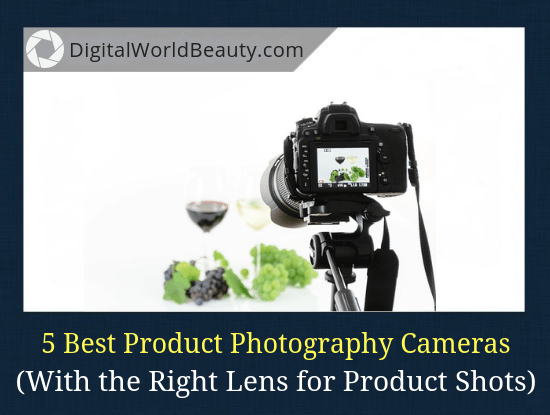
If you’re a entrepreneur who is taking product shots for Internet stores or Amazon, or are with an online presence and takes pictures of clothes and jewelry for your Instagram business page, then you may wonder:
- What is the best camera and lens for product photography?
- What is the best camera for ecommerce photos?
- Jewellery photography camera?
And that’s exactly what Ann Young, a New York based pro photographer and photo retoucher, will talk about today.
In this guest post, you’ll find the one to fit your requirements and budget among these 5 best cameras for product photography.
Here’s a table that’ll give you a quick look of the top 5 roundup and the reasons to buy the product. For further details, simply click ‘review>’ in respective row.
Product | Image | Reasons to Get It | |
1. Nikon D7200 One of the best cameras for close up product shots |
| ||
2. Rebel T7i Best starter DSLR for jewelry photos |
| ||
3. Olympus M10 Cheap camera for product shots; best in MFT dep't |
| ||
4. Fujifilm X-T2 Brilliant mid-range hybrid camera |
| ||
5. Nikon D610 Best affordable full-frame DSLR for product shots |
|
FYI: When choosing which product to include, we didn’t focus on the ‘latest and the greatest’, but rather on great price-quality ratio options, even if they are older models.
Whether you’re a complete newbie or an enthusiast, bootstrapped or not, you’ll find a good option that works best for your needs, skills, and budget.
So, what is the best camera for product photography in 2025? Let’s find out.
1. Nikon D7200
Best Starter DSLR for E-Commerce Photos
Type: Mid-size SLR | Weight: 765 g | Resolution: 24 MP | Sensor size: APS-C (22.5 x 15 mm) | LCD screen: Fixed | Touchscreen: No | Weather-sealed: Yes | ISO: Auto, 100-25600
The DX-format sensor of this Nikon has no optical low-pass filter (OLPF).
Nikon D7200 produces sharp, radiant images in a 24.2 MP resolution and rarely creates digital noise. It has the same AF system installed that they use on pro level DSLRs.
It might not be fully suitable for shooting garments, though, as it doesn’t feature a shock-proof filter.
Still, it deserves its spot on the list as the best camera for product shots. The truth is, the clarity of focus and image quality makes it a great camera for close up photography.
If we compare with its predecessor, D7200 got an enlarged battery capacity that can last through a 1000-shot working session before having have to charge it.
(You may also consider the older D7100 model if you’re looking for the best budget camera for product photography in 2025.)
Reasons to buy:
- Long-lasting charge
- Lifelike color rendition
- Wi-Fi and NFC modules
- Big RAW and JPG buffer
- ISO capability up to 6400
- DX-format CMOS matrix of 24.2 MP
Reasons to avoid:
- Wi-Fi limitations
- Fixed screen menu
- Not beginner-friendly navigation
Best lens for product photography:
With this quick f/1.8 aperture lens, you’ll definitely get incredible shallow depth-of-field images.
It will gently blur the background for product lifestyle photos and focus your attention on the primary object in the shot.
(Click on the button below for further reviews on Nikon D7200.)
2. Canon EOS Rebel T7i
Best Camera for Jewelry Photography 2025
Type: Mid-size SLR | Weight: 532 g | Resolution: 24 MP | Sensor size: APS-C (22.5 x 15 mm) | LCD screen: Fully articulated | Touchscreen: Yes | Weather-sealed: No | ISO: 100 – 25600 (expands to 51200)
This Canon DSLR, apart from boasting the finest 24MP sensor, received a recently developed great feature – the two-pixel autofocus.
Its capabilities make it the best camera for jewelry photography.
I find the articulated screen particularly helpful. It gives access to new angles and perspectives. The device is great for people who don’t have a lightbox or those who just don’t like to constantly check the image in the viewfinder.
It’s also an upper level entry-level camera, so if you’re a newbie, then you should definitely consider it.
For me. it absolutely deserves its spot on the list of the best camera for ecommerce photography
(If you’re looking for cheaper alternatives, consider the older T6i model. Read my full review here.)
Reasons to buy:
- Support of HDR video
- Full HD 1080p footage
- CMOS (APS-C) sensor with 24.2 MP
- Fantastic autofocus performance even in dim lights
Reasons to avoid:
- A viewfinder is too small
- Video quality is not higher than 1080p
Best lens for product photos:
It is created specifically to help photographers achieve highly realistic photos. Its 1:1 macro magnification works great with Canon EOS Rebel T7i.
(See my full list of the best lenses for Canon DSLRs.)
All in all, beginners will appreciate the teaching guide and quickly find their way through the easy interface.
Click the button below to find the best deals today.
3. Olympus OM-D E-M10 II
Best Cheap Camera for Product Photos
Type: SLR-style mirrorless | Weight: 351 g | Resolution: 16 MP | Sensor size: Four Thirds (17.3 x 13 mm) | LCD screen: Tilting | Touchscreen: Yes | Weather-sealed: No | ISO: Auto, 200 – 25600 (expands to 100-25600)
Have a look at this model if you’re an amateur photographer.
It has the MFT (micro four-thirds) system which became the brand classic. I believe it is a great choice for website photos or Instagram.
It gathered the strongest features Olympus presents to its customers, including a speedy high-quality sensor and a well-balanced internal stabilizer.
You can really see the latter feature helping while shooting in a dim room or without a tripod and not getting any blur. The color rendition is very natural and filled with rich semi-tones.
Without a doubt, it’s one of the best mirrorless camera for product photography options in its price range.
Reasons to buy:
- Shoots quickly
- Rather compact
- Focus bracketing
- 16-megapixel micro 4/3 sensor
- 3 Live modes: Composite, Bulb, and Time
- Extra capabilities: time-lapse, photo stories, selection of focus
Reasons to avoid:
- Works only with the built-in microphone
- Some would argue it’s an outdated sensor
- You’ll need time to get adjust to the settings
Best lens for product shots:
A truly great lens for the peculiarities of product shooting. Sharp photos without chromatic aberration are guaranteed.
(Click on the button below for further reviews on this Olympus model, and the best deals available today.)
4. Fujifilm X-T2
One of the Best Mirrorless Cameras for Close Up Shots
Type: SLR-style mirrorless | Weight: 507 g | Resolution: 24 MP | Sensor size: APS-C (23.6 x 15.6 mm) | LCD screen: Tilting | Touchscreen: No | Weather-sealed: Yes | ISO: Auto, 200-12800 (expands to 100-51200)
This model is remarkable for its vintage design that has resemblance with older cameras that worked with film.
Many appreciate this mirrorless for product shots because of the layout of physical buttons that makes the manual control easy. However, you’re able to apply settings via the touch-screen as well.
Many users say that Fuji gear has a specific color reproduction that seems to especially fit the tasks of product shooting. Technical specifications reinforce that effect.
The 24.3 MP sensor gives great quality and the modern autofocus system ensures clarity of the finest detail, which turns Fujifilm X-T2 into a great buying choice for product photos.
(This Fuji is also one of the best mid-range cameras for hybrid shooters.)
Continuously, it has proven to be a good camera for product photos.
Reasons to buy:
- Has a classy look
- Practical controls
- Stunning quality of images
- 3MP X-Trans CMOS III APS-C sensor
- Selection of AF modes for sharper pictures
Reasons to avoid:
- Low battery capacity
- Weak internal stabilization
- Phase autofocus misbehaves with some lenses
- A smaller-sized handle is not convenient for people with big hands
Best lens for product photography:
This weather sealed lens has standard 76-213 mm focal lengths and aperture up to f/2.8.
The stabilization mechanism is incredible. Combined with the triple linear motor it assures smooth performance and striking images.
(Click on the button below to find the best deal today.)
5. Nikon D610
Affordable Full-Frame DSLR for Product Shots
Type: Mid-size SLR | Weight: 850 g | Resolution: 24 MP | Sensor size: Full frame (35.9 x 24 mm) | LCD screen: Fixed | Touchscreen: No | Weather-sealed: No | ISO: 100 – 6400 in 1, 1/2 or 1/3 EV steps (50 – 25600 with boost)
It is a great device for professionals in need of the highest quality for large printing.
The reactions of this full-frame are lightning-quick: instant turn-on, no shutter delay, speedy processing.
The 24MP FX sensor produces highly-detailed photos. Even though the sensors are located near the shot center, it never interferes with the AF performance.
The major drawback of this Nikon D610 for product shots is its slightly confusing control panel, especially for beginners.
(All in all, it’s the best affordable camera for product photography, and by the way, this DSLR is great for portraits as well.)
Reasons to buy:
- Two memory card slots
- Well-made optical viewfinder
- Full frame 24MP CMOS sensor
- High detailization even at ISO 3200
- Continuous shooting speed of up to 6 fps
Reasons to avoid:
- Pretty bulky
- Fixed LCD display
- Interface might be challenging for beginners
Best lens for product photography:
This lens is highly rated among product photography shooters.
The f/2.8 aperture produces high detailization in low light as well. Shallow depth of field creates useful bokeh that keeps the viewers’ attention fixed on the object.
(Click on the button below for further reviews, and the best deals available today.)
How to Choose the Right Camera?
Now…
Product photography (no matter we are talking about jewelry, food or apparel) is a money-making, creative, and in-demand photography genre.
Professional photo gear will help any amateur take high-end magazine photos. Read this simple guide on how to choose the best gear for product shots.
Being a profitable and rapidly developing sphere, product photography attracts more and more shooters.
If you really want to surpass dozens of competitors and impress clients with professional product photos, you definitely need decent photo equipment.
So, our recommendations on how to choose the suitable camera for advertising/commercial photography will be really helpful.
Here’s a recap of the products covered:
5 Best Cameras for Product Photography 2025
- Nikon D7200 – Best DSLR camera for product photography in 2025
- Canon Rebel T7i – One of the best entry-level cameras for jewelry photography.
- Olympus OM-D E-M10 II – Great option in the micro 4/3 sensor department.
- Fujifilm X-T2 – Amazing mirrorless camera for commercial photography.
- Nikon D610 – Best affordable full-frame DSLR for product shots.
Mind Your Specialization
Product photography is a rather broad genre with many subtypes, such as jewelry, food, clothes, car shooting, online store photos etc.
This greatly influences the camera model you need for work.
Besides, the way your works will be presented to clients also plays a significant role.
For instance, you may take photos for online stores such as Amazon, eBay or Etsy and get great results with an average-priced compact.
If you want to take shots for further printing or sharing on stock websites, the quality requirements are higher.
The photo can be shrunk for digital use, while image printing greatly depends on the way your DSLR captures the scene, renders colors, textures, etc.
Camera Features to Pay Attention to
The majority of commercial photographers use mirrorless and DSLRs. This happens because of certain features only these camera types can boast of.
These are:
-
Manual Mode
Though all types have an Auto mode, professional photographers use it only in rare cases.
The thing is that cameras can’t always accurately evaluate the situation and choose the best settings needed, so shooters control and configure it manually in accordance with shooting and lighting conditions.
That’s why, you need a camera with a manual mode.
Even if you have little or even no experience of how to shot in this mode, you will quickly figure everything out if you practice a lot. In fact, there are many guides and video tutorials that you may use.
In addition, manual mode increases the lens focus. This means that photographing even tiny earrings or pins, you will have every detail clearly visible.
Taking product images, you can notice that a sensor isn’t always accurate.
This is the most frequent problem with jewelry shots. In such cases, it is so great to have a chance to select the perfect shutter speed, ISO value, aperture, etc. To represent colors in the most natural manner, you can also regulate the white balance.
All this makes a manual mode a decisive factor for many photographers.
-
Video Recording Function
Being engaged in product photography, you may need not only to take pictures but also record videos, so check whether your gear has such a function.
For example, your client may order a 360° view of the product and you need a suitable DSLR to cope with this task. Mind this while choosing the equipment.
Mainly all modern products have video recording capabilities, but if you can’t afford buying a new model, and are about purchasing an older device, check whether it offers video shooting features.
Besides, opt for gear with auto focus for videos, otherwise, you will need a tripod to hold your digital camera steady. Again, new models can please users with this parameter.
-
Interchangeable Lenses
The most pleasant feature of mirrorless and DSLRs is removable lenses. What is the point of using only a kit lens, if there is a variety of cool models that suit different photoshoots?
For instance, you need macro lenses for jewelry photography, while 24-70mm lenses are among the best product photography lenses for fashion shooting.
Attaching a suitable lens to DSLR or mirrorless body, you get more possibilities to take brilliant shots.
You may affirm that point-and-shooters, as well as mobile phones, have advanced built-in cameras. Still, they can’t compete with removable lens bodies.
What Specification to Consider
This is the feature that defines the differences between mirrorless and DSLRs for product photography most vividly. As for specification, some will show themselves better than others.
Here’s how.
-
The Number of Megapixels
Ask about the number of megapixels before buying a camera for product shots.
The bigger the number, the better the quality and the more controllable details in the shot are. This also makes further photo post processing more effective.
Another advantage is the possibility to accurately crop pictures and print them in a big format without detail loss. The compression won’t be so severe, so you can play with the composition without risks.
If you wish to cooperate with professional photography agencies, you need to specify the number of megapixels your DSLR has. Fortunately, there are many brands that produce models with decent MP number and don’t cost a fortune.
(The best examples are Sony A7, Nikon Df and Canon EOS 6D Mark II.)
Don’t expect that you will always shot in a studio with ideal lighting setup.
So, look for the cameras that work equally good in poor lit places and bright locations. The best variant is a device with sensitive sensor and insignificant noise level at high ISO.
To check it, compare images taken with different SLRs at the same ISO values. For example, Canon 5D Mark II shows worse results than Canon 5D Mark IV.
-
Improved AF System in Newer Models
Though manual focusing gives you better control over the shooting process, sometimes you can’t do without its auto analog.
It becomes irreplaceable when you are limited in time, but don’t want to compromise the photo quality because of the haste.
New models feature great auto focus systems both for dynamic and motionless shooting, while older models are more suitable for photographing static products.
Be very attentive when selecting the lens, as it affects the final result even more than the body.
-
The Color Spectrum
Every camera has a specific color spectrum. Some are vibrant, while others are colder or warmer.
There are photographers, who greatly rely on image editing and believe that they will be able to alter the coloring of a shot as much as they want. In fact, it is not so easy.
So better choose a model with an advanced color range such as Nikon D850 or Sony A7 III.
Best Product Photography Cameras (2025)
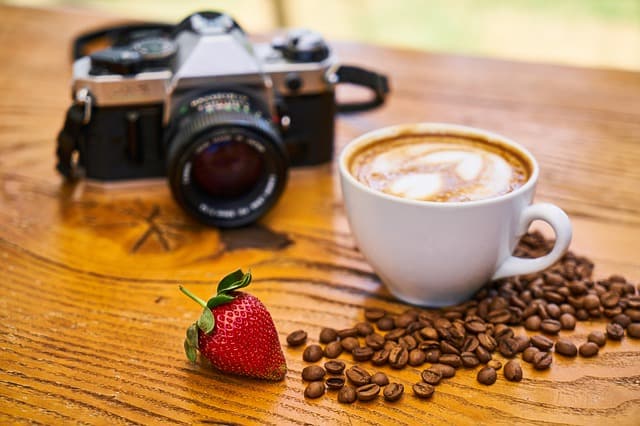
The choice of a perfect camera for product photography won’t be so tough, if you mind all the above-mentioned recommendations.
There are lots of quality DSLRs and mirrorless bodies from world-known brands that you can use to take professional product images.
Study the market carefully and choose something to your taste and budget.
Now, we’d like to hear from YOU:
- What’s your skill level in photography?
- What’s your exact photography genre: jewelry, food, clothing photos, or?
- What do you think of Ann’s recommendations of cameras for product photography in 2025?
Any questions? Suggestions? Recommendations?
Let us know in the comments below!
Sharing is caring!
About Author
Ann Young
A professional photographer and photo retoucher at FixThePhoto who specializes in portrait, wedding, commercial, and product photography for magazines, listings, advertising, etc.





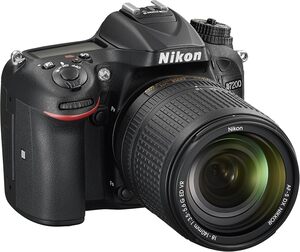
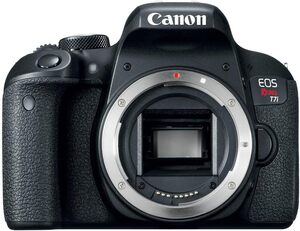
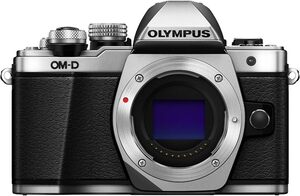


I have been in the hunt for a camera for a very long time and I always get hung up on what kind of camera will suit me best.
I am a barber and would like to take headshots also while having the option of video as I work with zoom capabilities and crystal clear photos.
I have products that I sell too and I want to put them on my site but they come out horrible from my phone with very dreary and blah looking pictures.
That doesn’t make me want to buy so I can only imagine others thinking the same.
I found the answer to my problem and I am glad to have read this article. Funny thing is that there aren’t many articles online on cameras for barbers, so I had to search “product” photography instead and that’s how I came across your post.
By the way, once I get this Canon Rebel DSLR, do you have any additional tips on how I can improve my photography/hair pictures?
Thanks for sharing,
Shannon
Hi Shannon,
Awesome to hear that you’ve found the solution to your problem! That’s pretty much my job description with this website 🙂
Canon Rebel is a great choice for many genres, by the way (Instagram, blog photos, sports shots etc.)
I think we both will agree that if your salon/barbershop photography doesn’t look great, then you’re basically losing clients and money.
So it’s great that you’re investing in a photography gear for your business. By doing so, you’ll certainly be ahead of your competition.
Now, to answer your question:
I hope these tips help and let me know if you have any further questions, Shannon!
This is a really awesome list of cameras to choose from…
While I’m only a beginner I’ve used a camera on a regular basis in order to snap photos of items I sell on a local Facebook Sales Group.
Another niche that I’ve sold in on eBay is actually video games. While it doesn’t make a ton of extra money… it does provide a little extra income. That’s when I realized that having a good quality camera is super important if I want to up my game online.
I think the Canon EOS Rebel T7i would be useful for these type of photos, and the fact that video isn’t above 1080 isn’t a big deal for me as I mainly would be just taking product photos and not videos.
Would you agree with that?
Hi Josh,
I must say at first I was confused when you said video games and then needing a camera for photos, not videos. Then I realized you were referring to running an e-commerce, not being a gamer yourself.
(If you were a gamer, I’d recommend other cameras specifically for live streaming.)
Anyway…
Rebel T7i definitely is a great choice for many photography purposes! From product shots to social media photography.
Even the Rebel T6i is a great choice this year, especially for beginners.
Happy photographing!
Kinda funny if you ask me.
The camera you chose as “Best for Beginners” is $700.00 at Amazon….and that doesn’t even include a lens!!!
The camera you chose as the most “AFFORDABLE” is $1,500.00 at Amazon….not including a lens!!!!!!!!!
Not very in-touch with the common Beginner or the common person who doesn’t think $1,500.00 (No Lens Camera) is “Affordable”.
Wow
Hi John,
I actually agree with you. When I write content, I try to provide options that offer good price/quality ratio.
But this is a guest post and Ann shared the options that are more recent models and likely aimed at enthusiasts with some experience and a higher budget. (Some folks just want the latest and the greatest).
Just now I provided an extensive response to Veronica’s question, which offers super budget/beginner friendly options too. Check it out below your comment.
Also, feel free to share your budget range John and what specific questions you have in mind, and I’ll gladly answer all your questions to the best of my ability 🙂
Thank you for commenting!
Hi, I am a rookie, beginner. I have a fine jewelry business. I have been taking my product photography myself with my iPhone 11 and I have a great editor but having said that. I want to take my photos to the next level and need way better pictures. What is the best choice for small detailed fine jewelry shots taken in a white box? I need something super easy to use, takes great pictures and easy to transfer to computer. And can you please suggest extra lenses if I need one?
Hi Veronica,
Thank you for your patience. I connected with some photographers to get their thoughts so I can provide a thorough response. You didn’t mention your budget range, so below are the options from super budget to up to $1-2K.
Super Budget Option:
If budget is the main concern, you might want to consider lighting over camera especially if you’ve been pretty happy with your iPhone and overall want the process to be easy. Truth is, what makes products “pop” is the lighting so you might want to invest in that.
Tips that can help draw attention to your products:
– positioning independent lights around and behind a jewel, and spotted to hit highlights
– white tacky adhesive behind a jewel for a more brilliant shine
– black backdrops/background and use clear stands/clamps (that can be edited out)
Also, if you decide to keep using the iPhone, I’d recommend using an auxiliary macro lens to allow you to get closer in for small details. As far as I know, Moment brand makes the best aux lenses for smartphones.
Product Photography Gear Setup Under $1000:
This is a great option if you want an easy to use entry level DSLR.
Nikon D3500 is the cheapest right now (around $500 with a kit lens)
Kit lens would be fine if you take photos of bracelets and necklaces. But if you have smaller jewelry, buy a close up filter (52mm thread size for the D3500 kit lens), or a dedicated glass like the Nikon AF-S DX Micro 40mm f/2.8G close-up lens.
Pro tip: If you use this DSLR, turn the mode dial to “close-up” (a flower icon), set the timer to 2 seconds (maybe longer) when you take images. This is to prevent camera shake.
The $1000-2000 Budget Range Option:
If you’d want to invest in a more expensive gear with more potential (and possibly use it for other genres), then you can go with any recent cameras like Canon 90D, 80D, 77D or T7i with a Canon 100mm f/2.8 Macro lens.
If you want a mirrorless option, you can consider newer Sony RX100 models because they are easy to use, offer a nice sensor, great lens for closer focusing distance and pretty good output quality overall for macro/product photography. You can shoot tethered to a computer so that images are automatically saved on there.
(This is basically the setup that does macro shooting and you can easily tether to your computer, and this way you could have semi-permanently rigged for consistency in shooting.)
Regardless of what gear you choose, you should definitely invest in a good lighting and backdrop! This definitely matters when doing product shoots.
I hope this helps, Veronica!